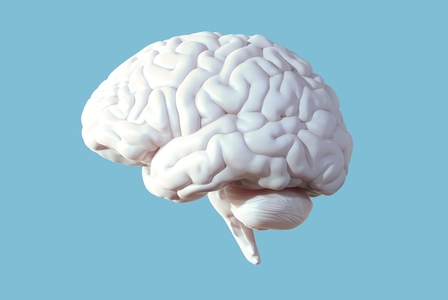Mind control gets a bad rap, but it could be the key to retraining motor function in stroke patients. A device newly approved by the FDA improves hand movement by wirelessly transmitting brainwaves to a tablet, which then controls a brace on the hand and wrist.
The FDA granted market authorization to Neurolutions’ IpsiHand Upper Extremity Rehabilitation System for use in post-stroke therapy regimens for patients ages 18 and older, making it the first noninvasive member of the trendy “brain-computer interface” family to receive agency approval.
The IpsiHand system includes a headpiece dotted with EEG electrodes to record brain activity on the side of the brain not affected by stroke. Those data are automatically sent to a tablet to determine an intended muscle movement, after which the tablet sends a signal to move the hand brace.
In doing so, the system is designed to help stroke patients with hand, wrist and arm injuries relearn how to grasp objects and strengthen their ability to do so. A clinical study showed that all patients saw improvements in their motor functions after using the device for 12 weeks.
The device can be used either in a clinic or at home after being prescribed by a physician.
Adverse reactions reported during the study included slight fatigue, discomfort and temporary skin redness after use. Additionally, the device is not recommended for use by stroke patients whose hand and wrist injuries prevent the brace from being properly fitted, nor those who have undergone a craniotomy or craniectomy.

interface for stroke rehabilitation to
receive FDA clearance. (Neurolutions)
“Thousands of stroke survivors require rehabilitation each year. Today’s authorization offers certain chronic stroke patients undergoing stroke rehabilitation an additional treatment option to help them move their hands and arms again and fills an unmet need for patients who may not have access to home-based stroke rehabilitation technologies,” Christopher Loftus, acting director of the FDA’s office of neurological and physical medicine devices, said in an agency statement.
The IpsiHand system was invented by two professors from Washington University in St. Louis. Eric Leuthardt, M.D., a neurosurgeon, and Daniel Moran, Ph.D., a professor of biomedical engineering, began developing the technology behind the device more than a decade ago and formed Neurolutions in 2007 to move it forward.
Neurolutions’ last reported funding round, in 2015, brought in $1.15 million from investors including Ascension Ventures, BioGenerator and Prolog Ventures.
The IpsiHand is among the first brain-computer interfaces to get the go-ahead from the FDA, and the first noninvasive one. To date, the only other approved interface is Blackrock Microsystems’ NeuroPort Array, an electrode device that monitors and records electrical activity in the brain for up to 30 days after implantation.
In 2019, the FDA issued a draft guidance outlining its plans to encourage and accelerate development of devices that rely on brainwaves to treat paralysis or amputation.
Since then, the agency has issued only a handful of breakthrough-device designations to systems that translate neurological output into physical therapies. Besides the IpsiHand, Elon Musk’s Neuralink received the designation for its mind-reading chip last July, followed by Synchron’s upper-limb paralysis-targeting Stentrode implant the following month.

